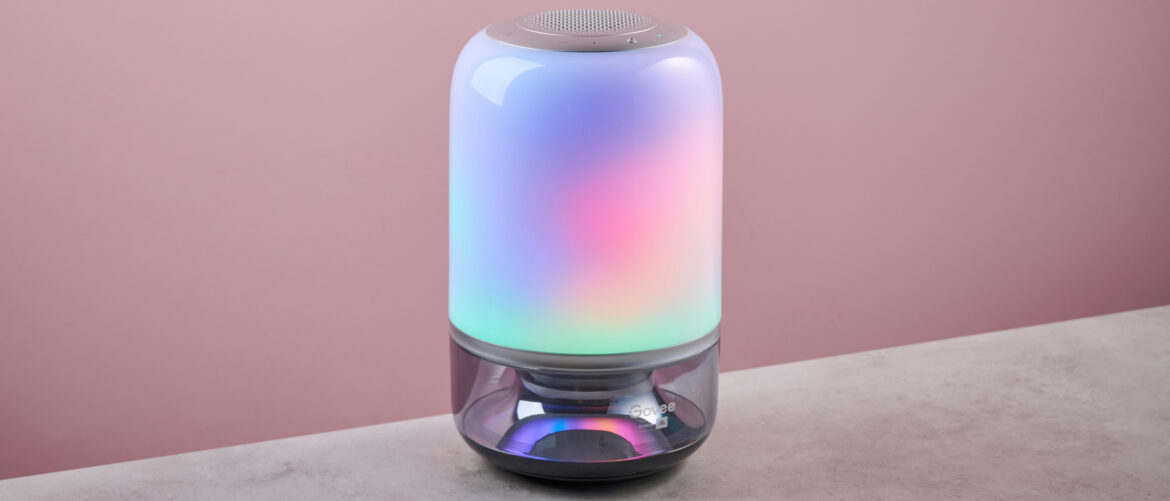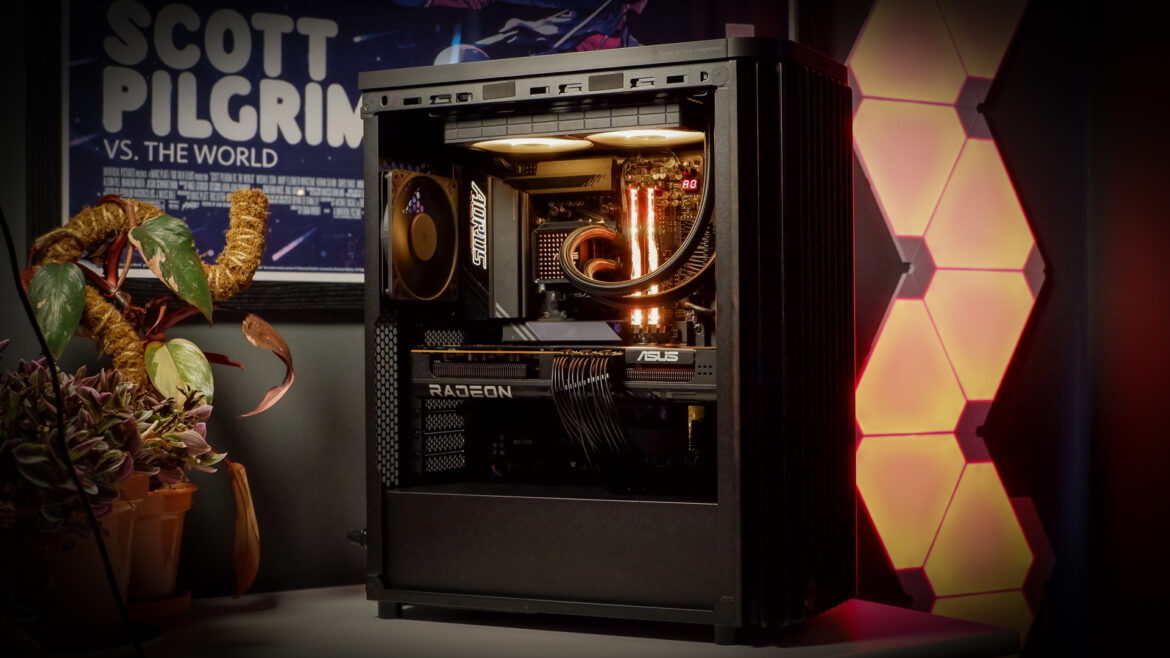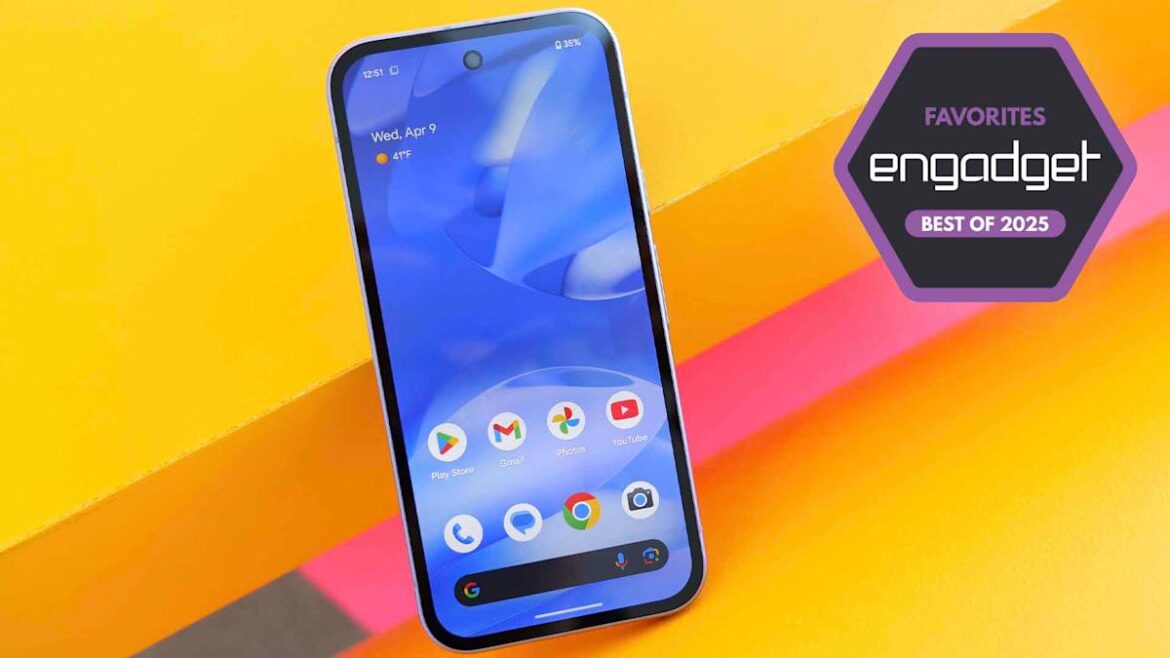The AirPods Pro are about as ubiquitous as earbuds can get. Step outside your door, and you’re almost certain to see people wearing them. For good reason, too. Their active noise cancelling (ANC) is excellent for the price, sound quality is great, and they’re comfortable and convenient. If it ain’t broke, why fix it? After all, messing with a winning formula just for the sake of change often ends up in disappointment.
That’s not the case with the $249.99 AirPods Pro 3. Of all the shiny new gadgets Apple launched last week, this is the sole no-brainer upgrade. Everything you liked about the AirPods Pro just got better — and so did everything you didn’t.
$249
The Good
- Improved ANC and sound
- Longer battery
- Standalone workout tracking
- Live translation
- Same price
- IP57
- Better fit
- Camera remote control is handy!
The Bad
- If you’re hoping for traditional foam ear tips, this isn’t that
The second-gen Pro was more or less about refining the software and sound; the overall design didn’t change. But while the AirPods Pro 3 look familiar at a glance, pop them in your ear and you’ll feel the difference. The new buds and tips are more angled, so they slot more naturally into your ear canal. You can twist them in for a more secure fit, whereas the last AirPods Pro would pop out unless you put them in just right.
Another plus: Apple now includes five ear tip sizes, adding an XXS size so you have a better chance of finding a comfy fit. That said, I would temper any expectations regarding the “foam-infused” tips. These aren’t your traditional foam tips, which expand to fit your ear more securely. What Apple’s done here is more of a hybrid approach. The front portion has some foam that subtly expands, but the majority of the tip is silicone for comfort and easier cleaning.
You can see the difference between the AirPods Pro 3 (top) versus the AirPods Pro 2.
And the other side.
The third-gen buds have a new shape to better fit ears.
Fit has always been one of the biggest complaints with AirPods, regardless of model. Whenever I come across AirPods haters, the usual reasons are either that the buds are too uncomfortable or they simply slip out. My spouse has bought multiple pairs over the years because the buds are always falling out of their ears. Nary a day goes by that I don’t find them crouching next to the bed or sofa, phone flashlight out, searching underneath for a missing AirPod. With these, they immediately declared, “They fit so much better!” and proceeded to pre-order their own pair. I’ve heard similar reactions from fellow reviewers who also had issues with the fit on prior AirPods Pro.
Still, that’s not a huge sample size, and everyone’s ear shape is unique. While I think the Pro 3 will fit more people, I still recommend trying a pair before committing if you’ve had issues in the past. But as someone who hasn’t, these fit me better too.
At Apple’s keynote last week, Apple executives kept saying these things had the “world’s best ANC” for wireless in-ear headphones. The claim is that the active noise cancellation in the third-gen buds is twice as good as the second gen, and four times better than the originals. The sound quality is also purportedly better due to a redesigned internal architecture that Apple says improves airflow for better bass.
Now, I’m not an audio engineer, but I did put the AirPods Pro 3’s ANC through a series of real-life tests alongside my personal pair of AirPods Pro 2. It’s pretty damn good.
The first test was a six-and-a-half hour flight from San Francisco to New York. Both pairs of buds performed well, but the third-gen were noticeably better. The dull hum of the plane was completely eliminated, though I could still hear announcements if I didn’t have audio playing. (That’s typical for any ANC headphones, however, especially earbuds.)
The case for the AirPods Pro 3 also has stronger Find My capabilities this year.
My second test was sitting in my kitchen while my spouse and in-laws were fixing our broken garbage disposal and running the laundry. Again, the second and third-gen buds were comparable, but the latter were notably better at dampening higher frequencies like voices and my cats yowling for kibble. If I put my tunes on, I couldn’t hear anything.
I also tested the active noise cancellation at a Bob Dylan and Willie Nelson concert against the Loop Experience 2 and EarPeace Music passive earplugs, which reduce noise by 17db and 20db respectively. The third-gen buds outperformed the Loop Experience 2, and were roughly on par with the Earpeace Music. I normally wouldn’t use AirPods in lieu of earplugs at a concert, but it’s nice to know that they’ll do in a pinch.
As for sound quality, the improvement is subtle but definitely there. I noticed it most while listening to the K-Pop Demon Hunters soundtrack. Multi-part vocal harmonies in songs like “Golden,” “Your Idol,” and “What It Sounds Like” are more audible, while the bass lines are punchier. Despite listening to this album on repeat since June with the AirPods Pro 2, I noticed new elements in the sound production, like faint bubble-popping effects in the catchy “Soda Pop.” I had a similar experience listening to old favorites. And while I still think spatial audio is gimmicky outside of a Vision Pro, I can appreciate that sound quality has been subtly improved on Dolby Atmos tracks as well. Ultimately, you’ll notice a richer overall listening experience regardless of whether you’re listening to music or watching an immersive movie.
Sensors: Dual beamforming microphones, inward-facing microphone, skin-detecting sensor, motion-detecting accelerometer, speech-detecting accelerometer, heart rate sensor, touch control.
Chips: H2 headphone chip, U2 chip in charging case
Dust and water resistance: IP57
Battery: Estimated 8 hours of listening time with ANC, 7.5 hours with Spatial Audio and Head tracking enabled. 6.5 hours with heart rate sensing during workouts. 10 hours in Transparency mode. 24 hours with the case.
Connectivity: Bluetooth 5.3
Calls sound “generically good,” according to a friend I called while walking along a windy highway full of bustling cars. They weren’t able to hear any of the wind or environmental noise, even though the ANC wasn’t able to wipe them out entirely for me.
ANC is power-intensive, but I was pleased to see the third-gen buds have improved battery life. I wore them with ANC enabled for five hours of my flight, plus a 10-minute wait at baggage claim and a 40-minute Uber ride home. I still had 27 percent battery left by the time I got home. Altogether, my usage roughly tracks with Apple’s eight-hour estimate for ANC listening time on a single charge.
Hands-free fitness tracking
Perhaps the biggest hardware update for the AirPods Pro 3 is the addition of a heart rate sensor, enabling fitness tracking without an Apple Watch. It’s not a huge surprise, given that Apple added heart rate sensors to the Powerbeats Pro 2 earlier this year. But the AirPods Pro do a lot more with the feature.
For starters, you can track your heart rate during 50 types of workouts directly from the native iOS Fitness app. On the Powerbeats, this was limited to a handful of partner apps at launch. This is great news for folks with wrist tattoos, which get in the way of smartwatch sensors, or those who’d rather not wear smart rings, chest straps, or smartwatches for sports like boxing or weight lifting. It’s also a boon for anyone who routinely forgets their Apple Watch while on walks.
You can choose to track workouts with the Apple Watch or with just the AirPods Pro 3.
Apple’s Fitness Plus app can display heart rate data from the AirPods Pro 3 — a strange omission from the Powerbeats at launch. Crucially, the AirPods can also act as a secondary heart rate data stream when used with the Apple Watch. Previously, apps always deferred to the Apple Watch over the Powerbeats. Now, Apple’s introduced an algorithm that will analyze which of the two heart rate data streams has a stronger signal in a given activity, and prefer that one. Some good news: Apple isn’t gatekeeping these improvements to the AirPods. It’s since announced these updates will also come to the Powerbeats in iOS 26.
I tried Pro 3-only tracking for two outdoor walks and found that the heart rate tracking was comparable to a chest strap, within roughly 5 to 10 beats per minute. Accuracy will heavily depend on a secure fit, but I never had issues getting readings, even when I got sweaty. Some more good news on that front: the buds now have IP57 sweat and water resistance. I wouldn’t dunk my head in a pool while wearing them, but they might stand a better chance of surviving the wash or a sudden downpour.
As part of Apple Intelligence, the AirPods Pro 3 (along with the Pro 2 and AirPods 4) will support live translations for a handful of languages. I’ve always wanted the Babel fish from Hitchhiker’s Guide to the Galaxy to be real, so I was stoked to try this out. Compared to phones or smartwatches, earbuds feel like a more natural choice for live translation tech.
Sorry to burst any bubbles. This live translation feature is no Babel fish, though I can see it being useful in a handful of scenarios.
The feature was impressive in a live demo Apple gave me where a Spanish speaker gave a short speech. I activated Live Translation via the iPhone’s Action Button and voilá. (You can also activate by pinching both AirPods’ stems). The speaker’s voice was dampened and after a short, intentional delay, Apple Intelligence crisply translated what was being said on-device. You and your conversation partner can either both use AirPods for translation, or if they don’t have a pair, you can also view a transcript of the translated conversation on your iPhone. And if it worked like this every single time, I’d cry tears of joy.
You can view a transcript of a conversation via the iPhone
You can also start a live translation session from the phone…
Or via touch controls. You just have to press the stems of each earbud.
But real-life conversations are a bit different. They’re not always calm. They’re full of ums and uhs, and I doubt there’s any child of immigrants who hasn’t heard an auntie rattle off at the speed of light. So I called up my cousin’s spouse, who is a fluent German speaker, to see how this feature would handle translation without guardrails. To both of our surprise, it actually worked quite well for conversational German. It was even able to accurately translate when he spoke in German slang in an Austrian accent — something he said might be hard for a native German speaker. (He likened it to hearing someone with a thick Scottish accent.) It only stumbled when he would occasionally switch back to English to comment on accuracy.
The feature isn’t limited to in-person conversations only, however. It works with any audio you’re hearing in person, meaning you should be able to use it for public announcements while traveling, video calls, or foreign-language media. To test this, I watched a scene from the German film Der Untergang featuring an epic meltdown from Hitler in the last days of his dictatorship. I chose this scene precisely because the actor speaks quickly and with emotion, changing thoughts mid-sentence, and there’s cross-talk from other characters. (And because I could compare the translation with the official subtitles.)
1/3You can get the gist even if it’s not quite right.
The translation feature performed admirably, but struggled to recognize character names or account for abrupt pauses in dialogue. Sometimes it identified the words correctly but used the wrong meaning for the context. For example, a line that Live Translation presented as “Steiner could not massage enough forces for an attack” is translated in the movie’s subtitles as “Steiner didn’t have enough force to attack.” A more literal translation would be “Steiner couldn’t amass enough forces for the attack.” There are multiple ways you can translate the word that became “massage,” but Live Translation picked the wrong one.
This isn’t an Apple limitation; I’ve seen it across all AI translation tech. But while live translation works well enough to convey broad meaning, it’s hard to say whether people will use this as intended. I’ve lived abroad and have a multilingual family. To me, using AirPods makes most sense in trying to translate announcements, museum tours where multilingual options aren’t available, or media that may not yet have subtitles. In face-to-face human interaction, most people are happy to gesture or point to a translation app on their phones. And in business meetings where the absolute correct meaning is crucial, it’s hard to beat seasoned interpreters. I’ll be curious to try this out during an upcoming trip to Italy, but I have the sense that doing so will also come with a healthy dose of anxiety and self-consciousness.
Now that I’ve used the AirPods Pro 3, I can’t go back.
Let me preface this by saying you shouldn’t run out and buy these if your AirPods Pro 2 are working perfectly fine. There’s no reason to throw out a good pair of earbuds. Ideally, I’d ask that everyone exercise restraint and only upgrade when their current AirPods finally crap out or are genuinely in need of replacement. (If you’re coming from the original AirPods Pro, you’ve got a much better case for upgrading.)
But I also know how gadget nerd brains work. If you’re going to ignore me, yes this is a worthy upgrade. I wrote ahead of last week’s event that Apple should lean into giving people what they want, and they’ve done that with the AirPods Pro 3. I have next to no complaints, and the only downside I can think of is perhaps the improved fit still won’t work for everyone. The price is the same, the new additions are smart, and most importantly, the sound quality and ANC are top-notch for earbuds.
I’m happy with my AirPods Pro 2, but I won’t lie. Now that I’ve experienced the AirPods Pro 3, I can’t go back. I’ll be ordering a pair for myself once I return this review unit.
Agree to continue: AirPods Pro 3
Every smart device now requires you to agree to a series of terms and conditions before you can use it — contracts that no one actually reads. It’s impossible for us to read and analyze every single one of these agreements. But we’re going to start counting exactly how many times you have to hit “agree” to use devices when we review them since these are agreements most people don’t read and definitely can’t negotiate.
Like any other Bluetooth earbuds, the AirPods Pro can technically be set up and used without you agreeing to anything in software. With the new heart rate tracking feature, however, you may optionally be asked to agree to third-party privacy policies and terms of service if you agree to share that data (i.e., Ladder, Runna, etc.)
Final tally is one mandatory agreement.
0 CommentsFollow topics and authors from this story to see more like this in your personalized homepage feed and to receive email updates.
- AppleClose
Apple
Posts from this topic will be added to your daily email digest and your homepage feed.
PlusFollow
See All Apple
- FitnessClose
Fitness
Posts from this topic will be added to your daily email digest and your homepage feed.
PlusFollow
See All Fitness
- Fitness Tracker ReviewsClose
Fitness Tracker Reviews
Posts from this topic will be added to your daily email digest and your homepage feed.
PlusFollow
See All Fitness Tracker Reviews
- GadgetsClose
Gadgets
Posts from this topic will be added to your daily email digest and your homepage feed.
PlusFollow
See All Gadgets
- Headphone ReviewsClose
Headphone Reviews
Posts from this topic will be added to your daily email digest and your homepage feed.
PlusFollow
See All Headphone Reviews
- ReviewsClose
Reviews
Posts from this topic will be added to your daily email digest and your homepage feed.
PlusFollow
See All Reviews
- TechClose
Tech
Posts from this topic will be added to your daily email digest and your homepage feed.
PlusFollow
See All Tech
- WearableClose
Wearable
Posts from this topic will be added to your daily email digest and your homepage feed.
PlusFollow
See All Wearable










